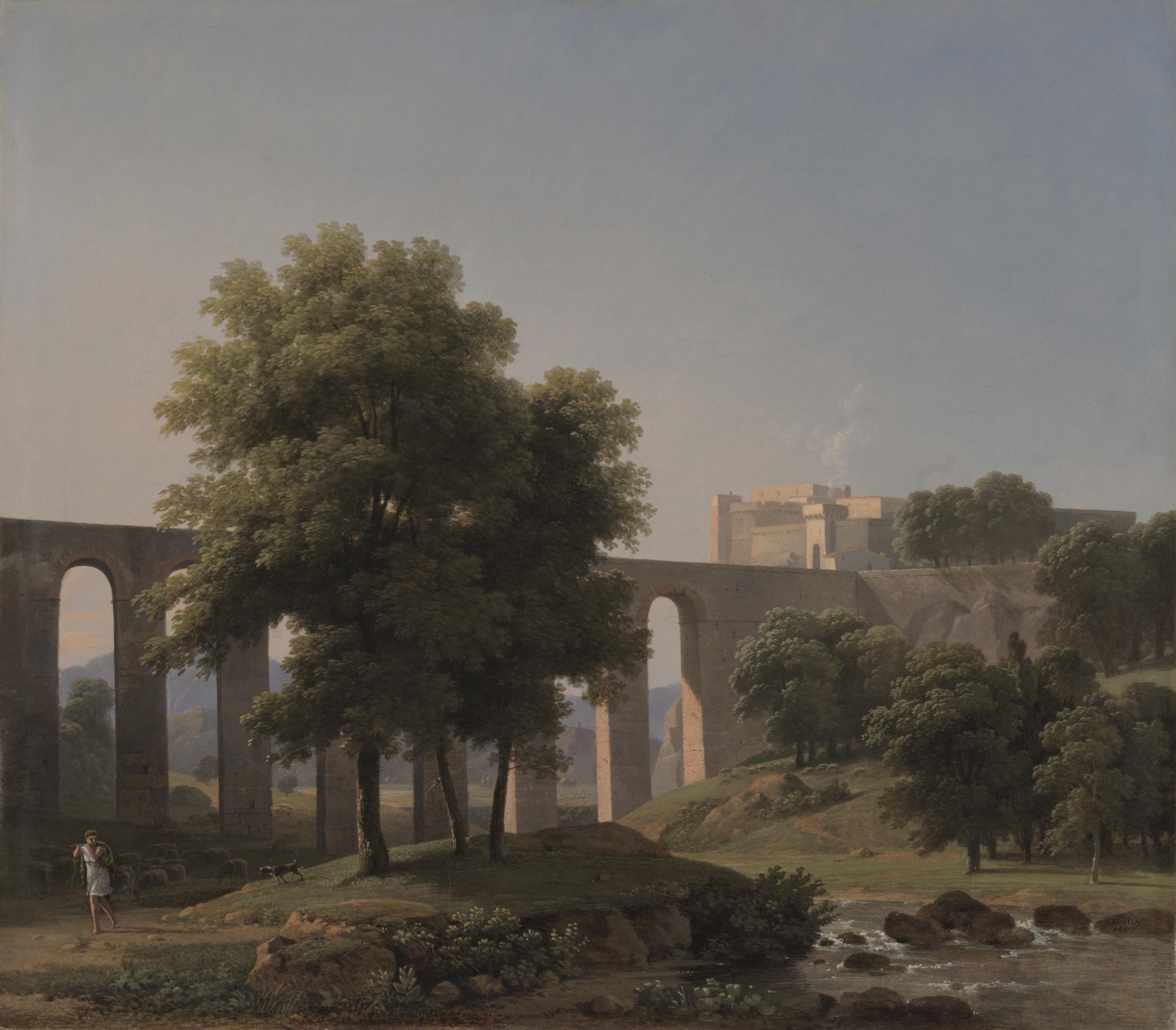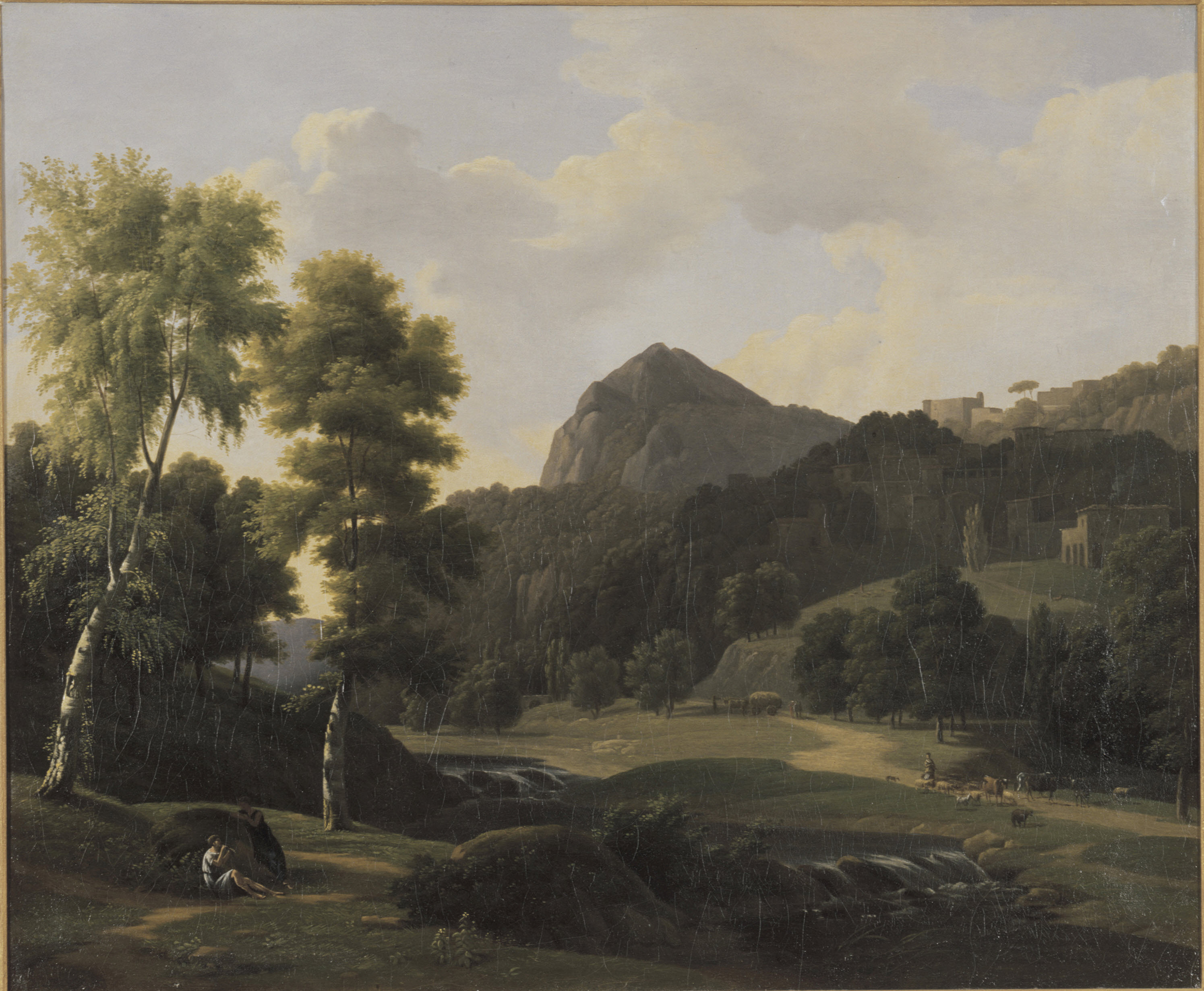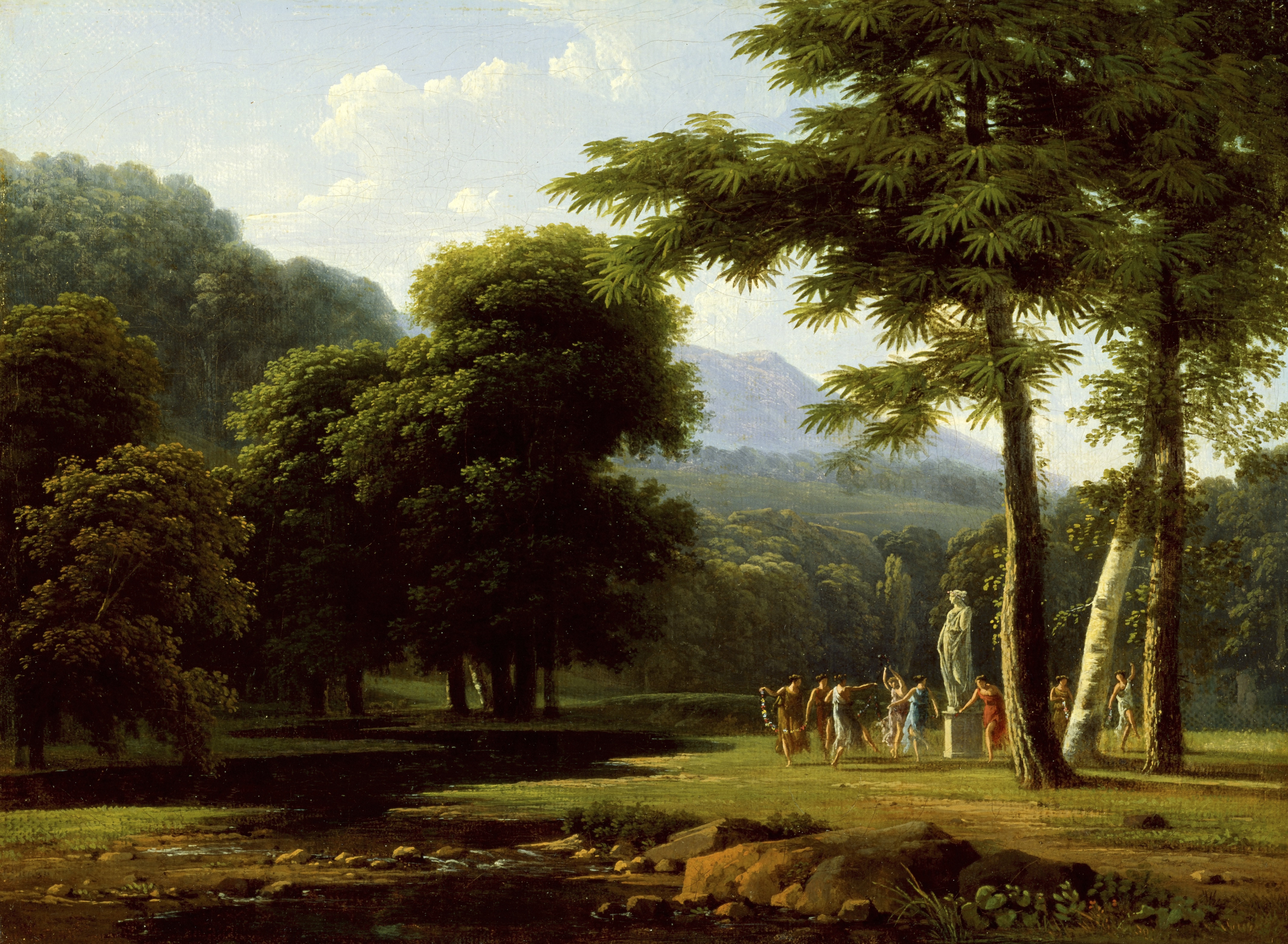Born in Paris in 1767, Jean–Victor Bertin achieved a significant artistic reputation in his day and profoundly influenced succeeding generations of painters as a professor at the École des Beaux-Arts.1 He entered the Académie Royale de Peinture as a pupil of the history painter Gabriel-François Doyen (1726–1806), and in 1785 he began studying with Pierre-Henri de Valenciennes (1750–1819), whose practice and groundbreaking treatise on painting, published in 1800, established landscape as a respectable genre in the Académie.2 In 1801, Bertin proposed a Prix de Rome for paysage historique, Italianate landscape ennobled by architectural and narrative references to antiquity, and was rewarded in 1817 when the first competition was won by his pupil Achille Etna Michallon (1796–1822). He published two lithographic series in order to disseminate correct landscape principles, Recueil d’études de paysage (from 1816) and études de paysages (1823). Following Valenciennes’s death in 1819, Bertin became the acknowledged master of paysage historique, perpetuating the classicizing paradigm of Nicolas Poussin (1594–1665) and Claude Lorrain (1604–1682), while introducing more empirical observation of atmosphere and topography. He passed on Valenciennes’s training to the next generation, including Michallon, Jules Coignet (1798–1860), Antoine-Félix Boisselier the Younger (1790–1857), Jean Charles Joseph Rémond (1795–1875), and Jean-Baptiste-Camille Corot (1796–1875). From 1793 until his death in 1842, Bertin regularly contributed to the Salon and was awarded the Légion d’honneur in 1822.

Bertin may have visited Italy between 1806 and 1808 and thereafter exhibited Italian landscapes with complex spatial arrangements and extremely delicate lighting. Between 1810 and 1830, he produced his most successful paintings, such as An Aqueduct near a Fortress (1807; fig.1), Landscape (ca. 1802; fig.2) and Landscape (1804; fig.3). These Neoclassical compositions were highly valued in the nineteenth century, while his landscape sketches appealed to the more Modernist sensibilities of collectors in the second half of the twentieth century. His most famous student was Corot, who would expand on lessons learned from Bertin to develop the genre of landscape into the preeminent arena for ambitious, avant-garde painting.
This painting depicts the corner of a village near Paris, possibly on the Yvette River, making it a relatively unusual sketch of France in a generation of plein-air painters who focused on Italian landscape.3 One finds in this work the classical clarity of composition and the precise, enamel-like execution, the limpid atmosphere, the azure sky, and the sense of silence and mystery inherited from Claude and Poussin. Unlike the idealized, distant locales of the earlier artists, however, this is a highly specific coin du village, and Bertin has pulled in close to his charming if mundane motif. The sense of the formal, detached vision of the seventeenth-century masters has been replaced here with a distinctly eighteenth-century empiricism.


Bertin was clearly drawn to the site for its compositional appeal—the cluster of buildings forming a tight, geometrical center, with the graceful arches of the bridge reflected in the water, leading off to the left. Several densely foliated trees, a sharply rising hill in the background, and a brilliant cerulean sky with sparse clouds complete the image. The artist’s transcription of the most delicate light effects, as the sun picks out various planes of the buildings and the rhythmic openings beneath the bridge, is the central drama of the painting. Minutely observed moments—the sun beaming across the wall at the right, the gleaming thread of light running along the top edge of the bridge, the miniscule shadows cast by the nubs of iron reinforcements in the wall of the building at the center—testify to Bertin’s mastery of plein-air painting.
- Mary G. Morton
-
Suzanne Gutwirth published a monograph on Bertin in 1974: “Jean-Victor Bertin, un paysagiste néo-classique,” Gazette des beaux-arts (May–June 1974), pp. 337–58. Additional work on Bertin includes Peter Gallassi, Corot in Italy: Open-Air Painting and the Classical-Landscape Tradition (New Haven: Yale University Press, 1991); Anna Ottani Cavina, “Paysages d’Italie: Gauffier, Granet, Jean-Victor Bertin,” in Mélanges en homage à Pierre Rosenberg: Peintures et dessins en France et en Italie, XVIIe—XVIIIe siècles (Paris: Réunion des Musées Nationaux, 2001), pp. 363–71; Catherine Sterling and Jérôme Binda, Amoris Causa: Trophées des peintres voyageurs 1750–1850 (Paris: Galerie Lestranger, 2004), pp. 70–83. I am grateful to Frauke Josenhans for her research assistance. ↩︎
-
Pierre-Henri de Valenciennes, Elémens de perspective pratique, à l’usage des artistes: Suivis de réflexions et conseils à un élève sur la peinture, et particulièrement sur le genre du paysage (Paris: Chez l’Auteur, 1880). ↩︎
-
Other sketches of France by Bertin include Vue prise à Essonnes près de Corbeil (ca. 1805, Louvre) and several scenes of the park of Saint Cloud: Entrance to the Park at Saint-Cloud (ca. 1802, Art Institute of Chicago), Entrance to the Park at Saint-Cloud (ca. 1800, Museum of Fine Arts, Boston), and Entry to the Park at St. Cloud (1810, Los Angeles County Museum of Art). ↩︎